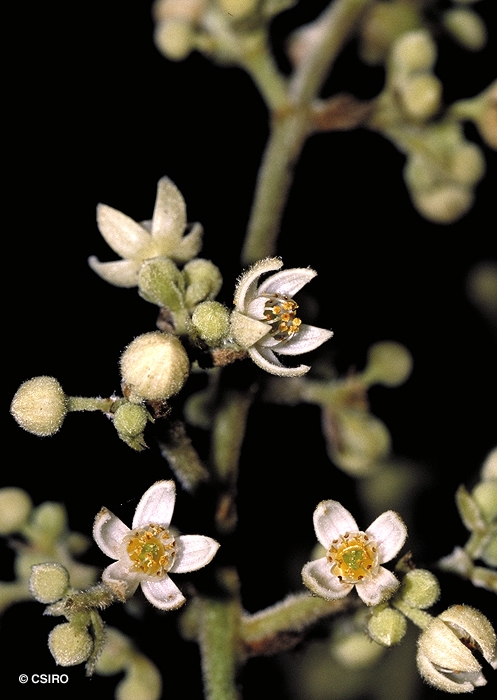Australian Tropical Rainforest Plants - Online edition
Gillbeea whypallana Rozefelds & Pellow
Click/tap on images to enlarge

Flowers. © CSIRO

Scale bar 10mm. © CSIRO

Cotyledon stage, epigeal germination. © CSIRO

10th leaf stage. © CSIRO
Family
Rozefelds, A.C. & Pellow, B. (2000) Nordic Journal of Botany 20(4): 435-440. Type: SFR 144, Fantail LA, [Mount Windsor State Forest], 16 14'S 145 5'E, Altitude 960 M, Gray 2668, 8 July 1982.
Common name
Pink Alder; Alder, Pink
Stem
Leaves
Flowers
Fruit
Fruits with stellate hairs, 3-4 winged, fruits + wings about 20 x 15 mm. Wings conspicuously reticulately veined.
Seedlings
Cotyledons oblong, about 10-14 x 3-6 mm, hairy on the upper surface, stipules 2 and deeply bifid. At the tenth leaf stage: leaf blade obovate, margin serrate; hairy on the upper surface; stipules 2 deeply bifid, gradually becoming 4 in older growth, shortly petiolate, margins serrate; petiole and stem densely hairy. Seed germination time 14 to 25 days.
Distribution and Ecology
RFK Code
1251
Copyright © CSIRO 2020, all rights reserved.

Web edition hosted at https://apps.lucidcentral.org/rainforest




